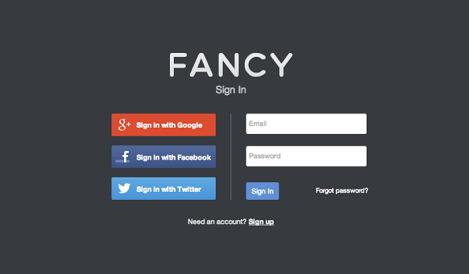
Did you realize that Google Plus (also known as Google+) is still alive? Even if you did, you probably haven’t checked out its offerings in quite some time. While Google doesn’t like to break out official numbers,
analyst firms such as comScore have suggested over the years that users spend only a few minutes per month on the service—if they visit at all. In January 2015, one researcher put the audience for Google Plus at somewhere between 4-6 million. Compare that to Facebook, which has over a billion. Faced with those sorts of numbers, another massive enterprise might have considered shutting down the service. But Google keeps plugging away.
Its most recent update lets users hide low-quality comments, offers adjusted image sizes (the better to show off great photos, as you can see above), and resurrects the Events feature.
Changing the Game
Over the past decade, Google has taken several stabs at conquering the social-media realm. Way back in ye olden days of 2008, it launched Google Friend Connect, which let users build and share profiles. Two years later, it offered Google Buzz, a micro-blogging site that bore some striking similarities to Twitter. Google eventually shut down both services. From the outset, Google Plus was meant to be Google’s breakthrough product in social, not to mention a Facebook Killer. Like Facebook, Google Plus allows users to build profiles, and connect those profiles into networks of friends and acquaintances; buoyed by Google’s massive online reach, the service quickly racked up millions of members. But for a multitude of reasons, and despite some novel features such as Hangouts and Circles, Google Plus began to see its adoption and engagement numbers level off. "It was clear if you looked at the per user metrics, people weren’t posting, weren't returning and weren’t really engaging with the product," one former Google employee is quoted as saying in
Mashable’s lengthy article on the service’s decline. “Six months in, there started to be a feeling that this isn’t really working.” Rather than kill the service, Google decided to shift the goalposts. First it began integrating aspects of Google Plus services, such as Hangouts, into its other products. No longer was Google Plus a distinct social network; now it was an amorphous “social media thingie” available to hundreds of millions of Google users, whether they wanted those services or not. Next, Google shifted the “core” Google Plus experience to focus on photos and communities, in a bid to differentiate it further from Facebook.
Sunsetting
Despite all that tinkering, Google Plus has failed to regain the initiative. Facebook maintains a tight lock on social. All of which brings up an excellent question: why does Google keep Plus alive? The answer may be architectural. Just as the roots of an enormous tree can extend through the surrounding soil, locking it firmly into the landscape, the integration of Google Plus into so many Google services could render it hard to remove without a whole lot of painful engineering work. In addition, Google may have made Plus a part of its core search algorithm; and adjusting or removing anything algorithm-related isn’t something that Google does lightly. Maybe some Google executives also figure that, if Facebook eventually falters in its quest to connect everyone on the planet, Google Plus will be there to assume the crown. That seems highly unlikely, but weirder things have happened. For other companies, the decision to “sunset” or shut down a feature is often a lot simpler to make. If a product is no longer solving a significant customer pain-point, or improving their lives in a meaningful way, it’s well worth placing on the chopping block—especially if it’s a drain on resources. The tech industry likes to focus on building new things for tomorrow; but sometimes the best way forward is to destroy.
 Did you realize that Google Plus (also known as Google+) is still alive? Even if you did, you probably haven’t checked out its offerings in quite some time. While Google doesn’t like to break out official numbers, analyst firms such as comScore have suggested over the years that users spend only a few minutes per month on the service—if they visit at all. In January 2015, one researcher put the audience for Google Plus at somewhere between 4-6 million. Compare that to Facebook, which has over a billion. Faced with those sorts of numbers, another massive enterprise might have considered shutting down the service. But Google keeps plugging away. Its most recent update lets users hide low-quality comments, offers adjusted image sizes (the better to show off great photos, as you can see above), and resurrects the Events feature.
Did you realize that Google Plus (also known as Google+) is still alive? Even if you did, you probably haven’t checked out its offerings in quite some time. While Google doesn’t like to break out official numbers, analyst firms such as comScore have suggested over the years that users spend only a few minutes per month on the service—if they visit at all. In January 2015, one researcher put the audience for Google Plus at somewhere between 4-6 million. Compare that to Facebook, which has over a billion. Faced with those sorts of numbers, another massive enterprise might have considered shutting down the service. But Google keeps plugging away. Its most recent update lets users hide low-quality comments, offers adjusted image sizes (the better to show off great photos, as you can see above), and resurrects the Events feature.
 Did you realize that Google Plus (also known as Google+) is still alive? Even if you did, you probably haven’t checked out its offerings in quite some time. While Google doesn’t like to break out official numbers, analyst firms such as comScore have suggested over the years that users spend only a few minutes per month on the service—if they visit at all. In January 2015, one researcher put the audience for Google Plus at somewhere between 4-6 million. Compare that to Facebook, which has over a billion. Faced with those sorts of numbers, another massive enterprise might have considered shutting down the service. But Google keeps plugging away. Its most recent update lets users hide low-quality comments, offers adjusted image sizes (the better to show off great photos, as you can see above), and resurrects the Events feature.
Did you realize that Google Plus (also known as Google+) is still alive? Even if you did, you probably haven’t checked out its offerings in quite some time. While Google doesn’t like to break out official numbers, analyst firms such as comScore have suggested over the years that users spend only a few minutes per month on the service—if they visit at all. In January 2015, one researcher put the audience for Google Plus at somewhere between 4-6 million. Compare that to Facebook, which has over a billion. Faced with those sorts of numbers, another massive enterprise might have considered shutting down the service. But Google keeps plugging away. Its most recent update lets users hide low-quality comments, offers adjusted image sizes (the better to show off great photos, as you can see above), and resurrects the Events feature.



